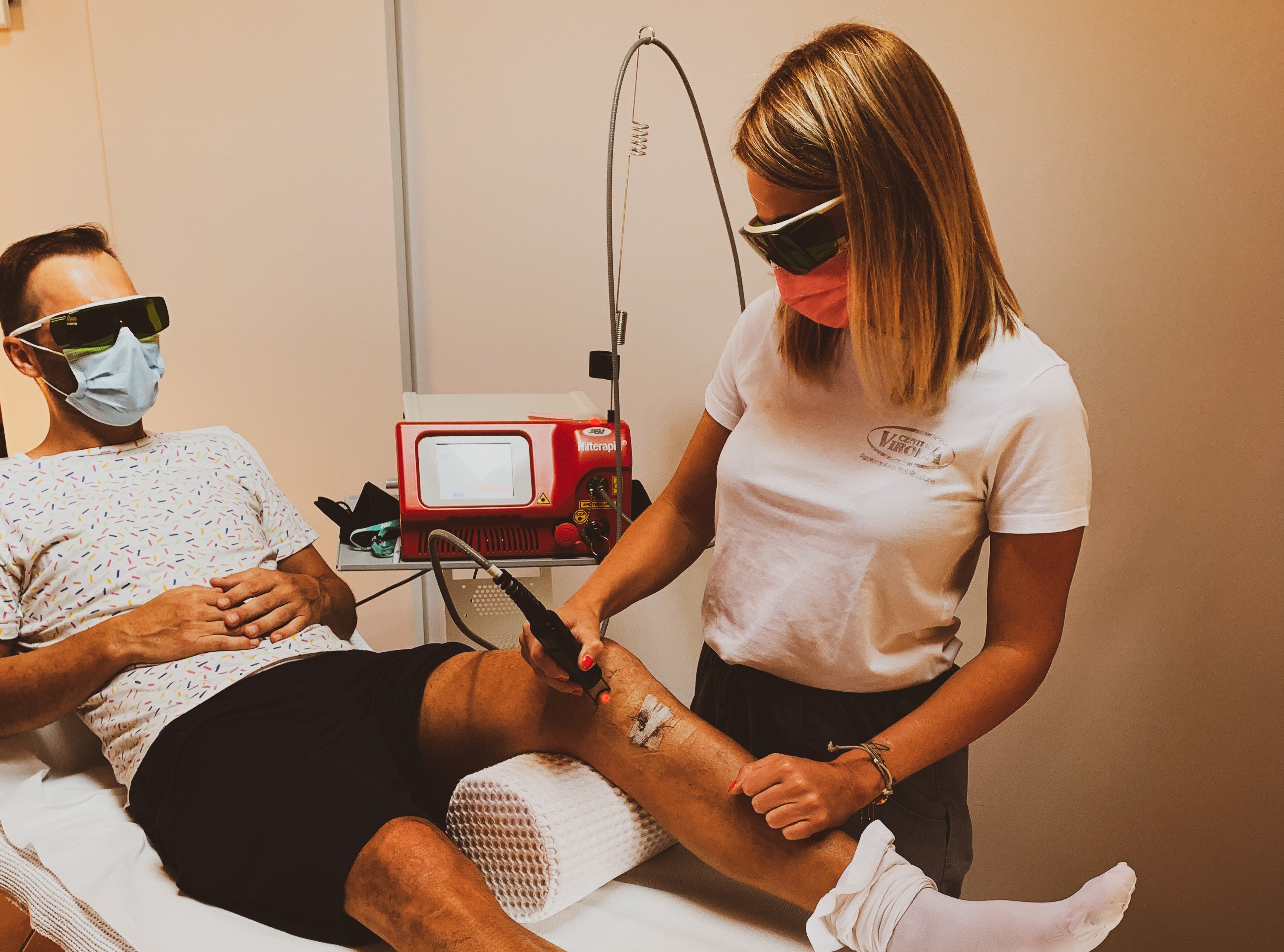SOS cruciate: Hilterapia® from prevention to rehabilitation
It’s written ACL, but it means anterior cruciate ligament, the sore point for many sportspeople, particularly footballers, who have to come to terms with its tearing.
A study conducted by the UEFA and carried out by Walden in 2016 reports an incidence of 0.013 injuries per 1,000 hours of training and of 0.309 injuries per 1,000 hours of play, particularly among football professionals. It follows that a team with 25 players in the top competitions can reasonably expect an ACL injury to one of its athletes every two years. The situation is no better for amateur football: the risk of being injured during a match between office employees is even more tangible, particularly if there has been little or inappropriate training.
Where athletes and enthusiasts have injury mechanisms in common, usually knee rotations and hyperextensions, the recovery times are different. Whilst 90% of professional footballers is back to the levels of before the joint debacle within 12 months, managing to take part in the first match after 7-9 months, among amateurs this percentage crashes to 60% and returning to the pitch takes a great deal longer than 12 months.
In order therefore to forestall the risk of experiencing the tearing of the anterior cruciate ligament, the only solution is to bring forward the schedule, by following a specific training program, focused on lengthening and building muscle mass in the lower limbs, to improve proprioception. Indeed, scientific literature emphasises how appropriate training, consisting of muscular strengthening and balance exercises, at least once a week, significantly reduces the number of injuries to the anterior cruciate ligament.

“To limit the possibility of tearing the ACL, explains Doctor Valentina Rivetti, physiotherapist and owner of the “Centro Vilora” which numbers several professional football players among its patients – maintaining a good general muscle tone is fundamental. Training the lower limbs, synergic of the action of the cruciate ligaments is a priority, training the trunk must not be underestimated, Stretching too is not a secondary issue: good muscle elasticity ensures an improved mobility”.
From the point of view of prevention, laser therapy can be of assistance.
“Undergoing Hilterapia® sessions, in particular, is confirmed useful on a preventive basis, especially when you feel a small muscle or joint discomfort which can be a warning for more serious pathologies, such as for example muscle injuries. Indicative of low muscle elasticity, if not treated correctly, these problems lead to a further shortening of the muscle group in question”.
If prevention is not enough and the cruciate should tear in any case, the problem can be addressed by resorting to surgery or to conservative treatment. Whether an operation is accepted or not, rehabilitation is decisive for a good recovery.
“During the phase immediately after the surgery, Hilterapia® is a valid technology for disposing of the liquids and of the oedema which may have arisen in the perioperative areas. Its contribution is also effective when treating the scars, helping healing delays, improving the aesthetic appearance and in treating the collection area of the new ligament which is often on the back of the thigh and where the cut is very painful. Thanks to its antalgic effect, Hilterapia®, is not only effective on the associated pain, but also on the repair. Even should surgery not be chosen, Hilterapia® is an ally which allows reducing the inflammation caused by the trauma and enables a quick start of the conservative rehabilitation path for muscle strengthening and mobility recovery”.










